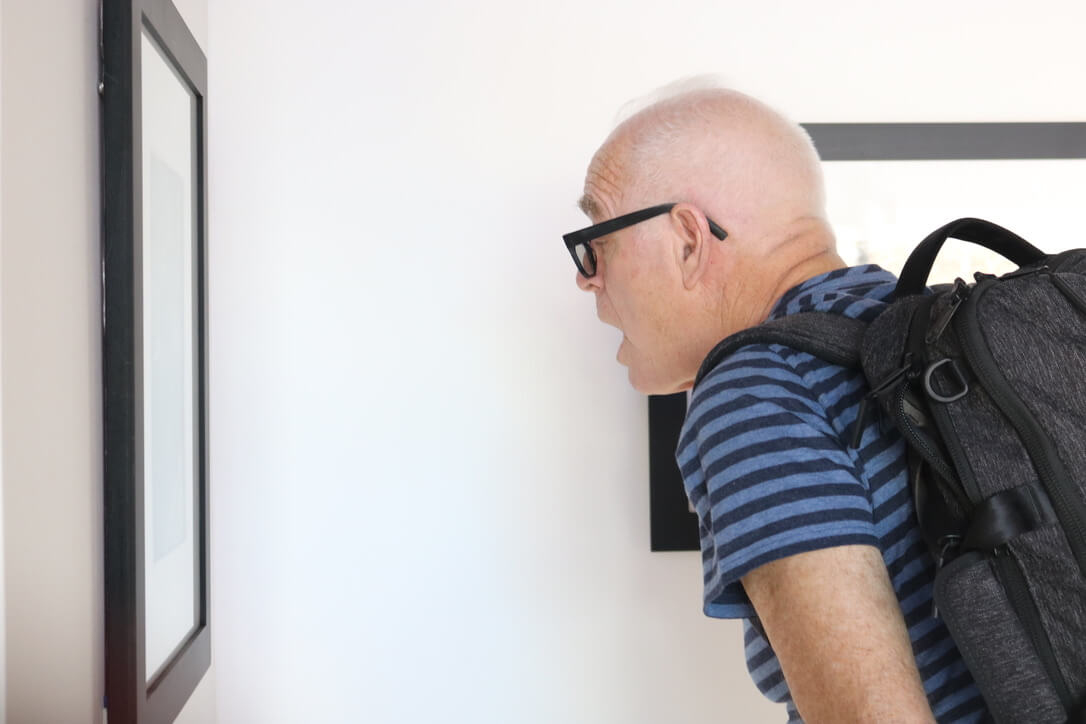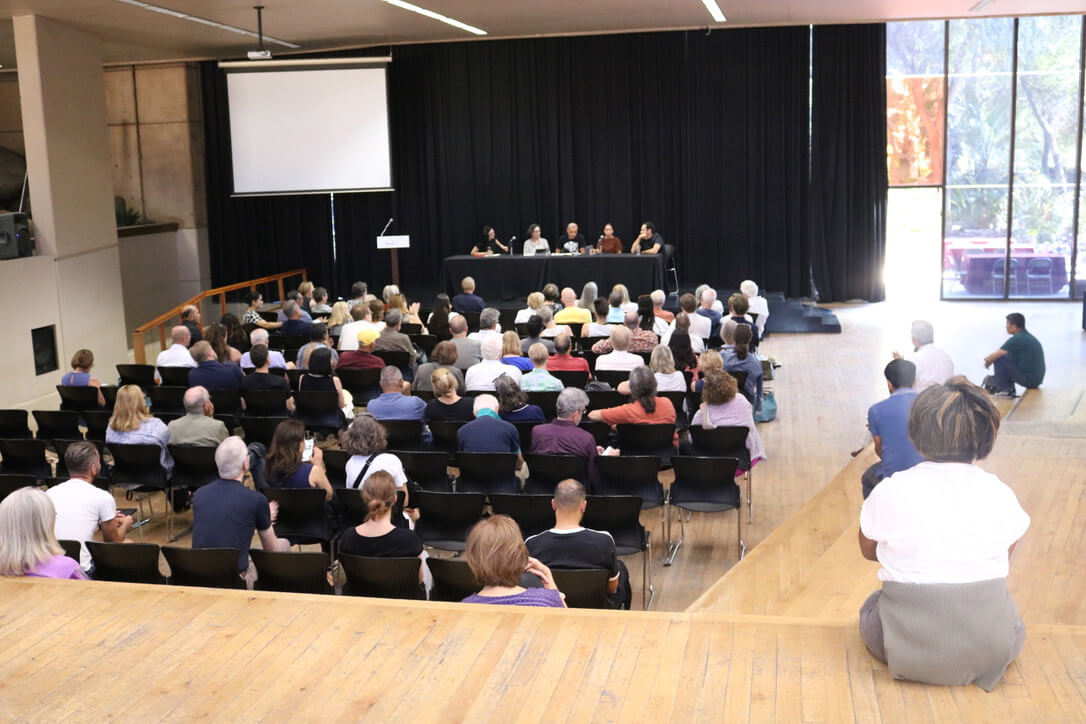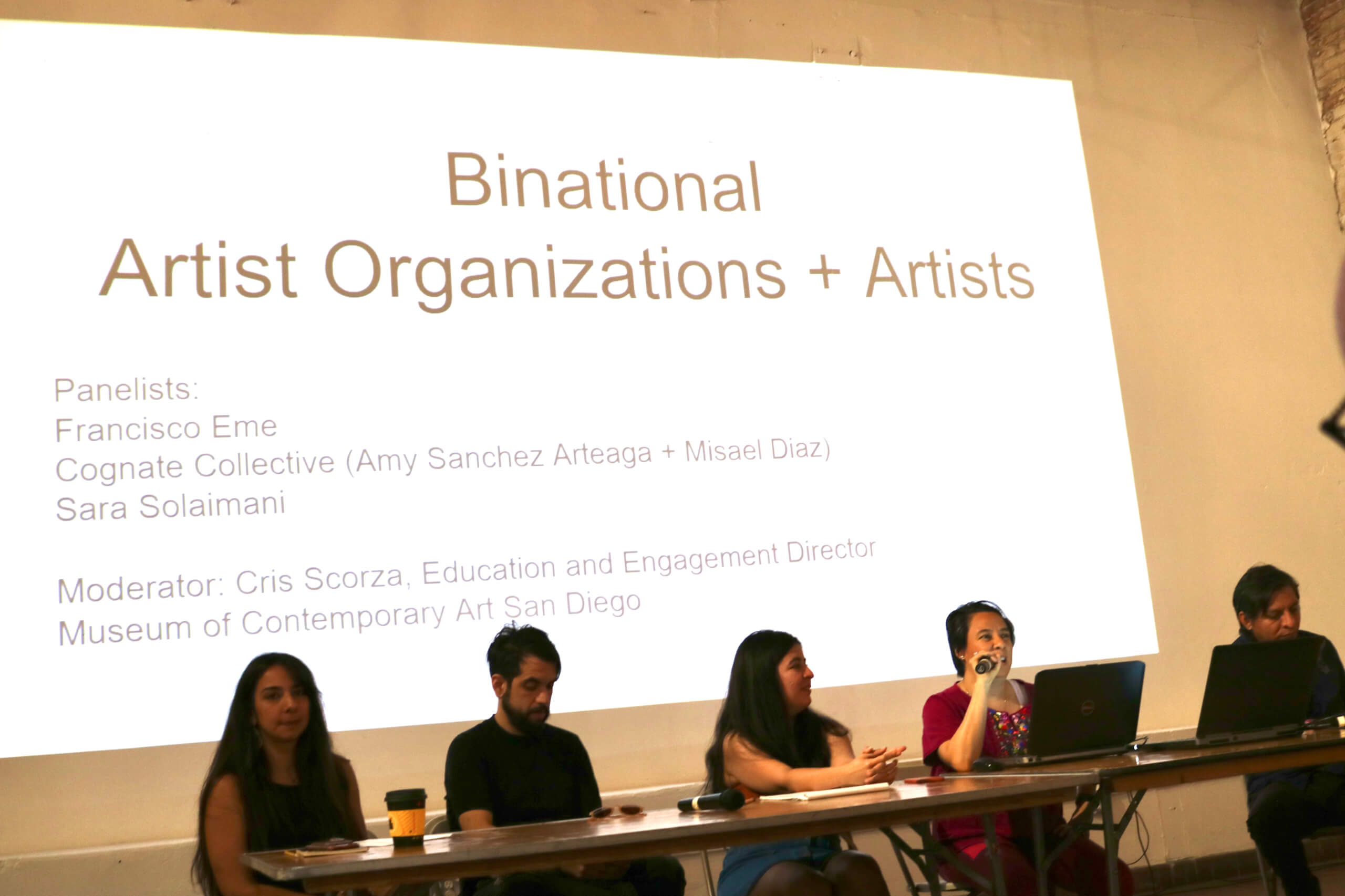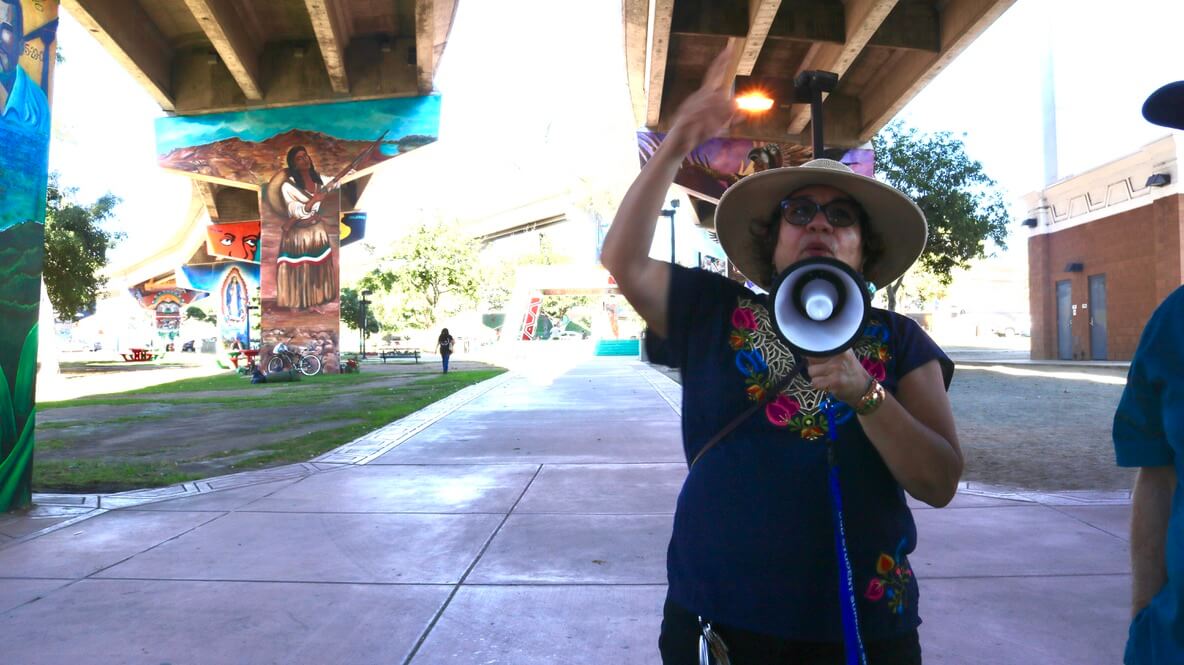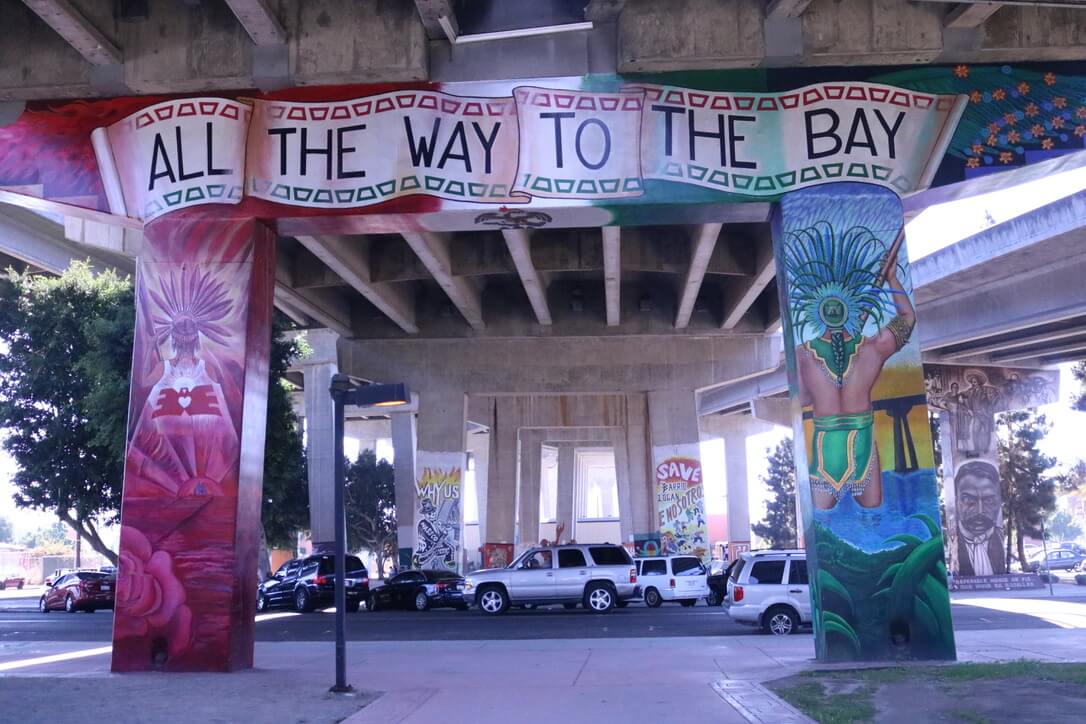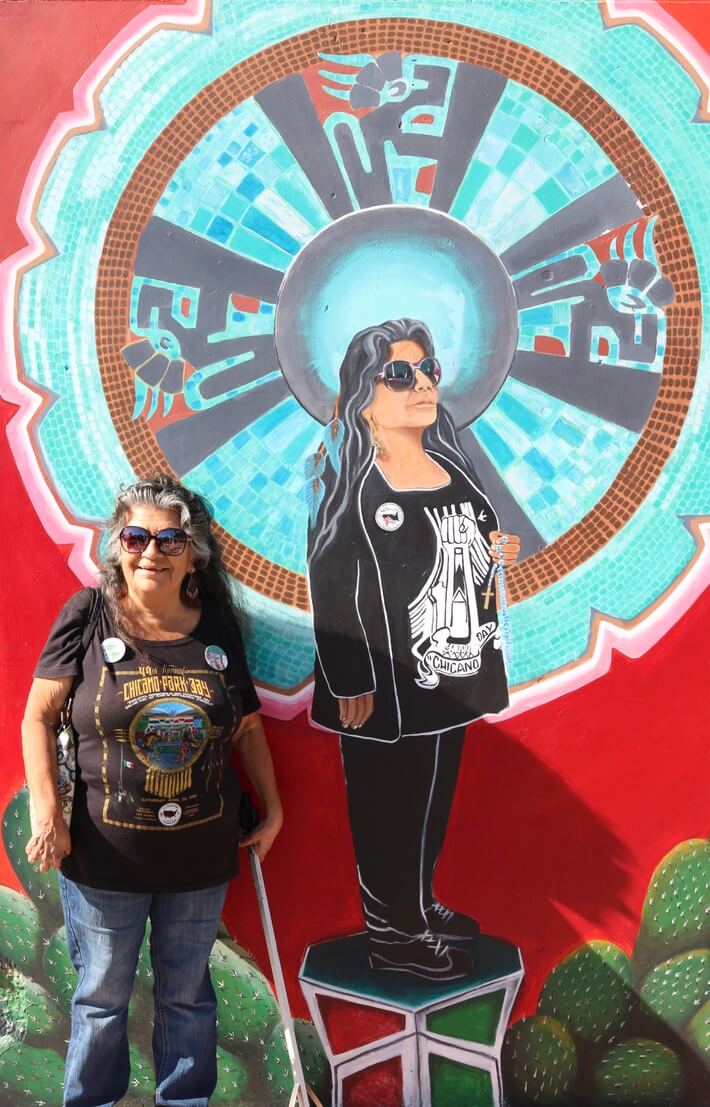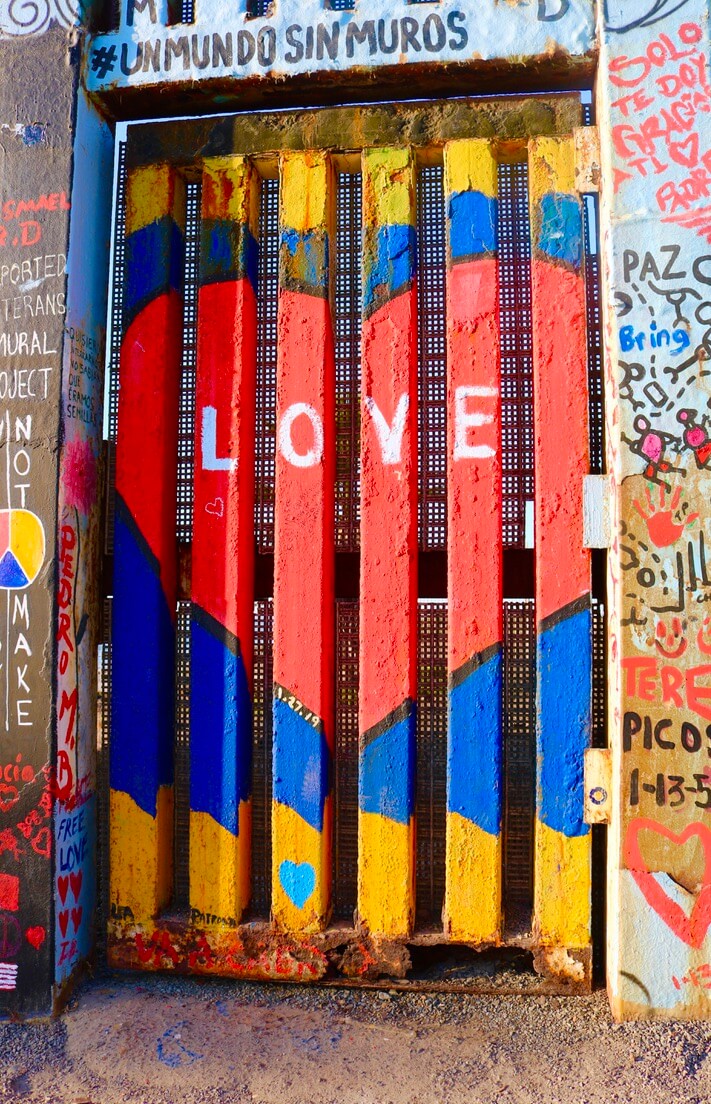Our experiences were centered at Bread & Salt, an arts collective and gallery created by James Brown (LF ‘09) in the Barrio Logan neighborhood. Within the space, everything carried an arts focussed purpose, from the exhibits that filled its walls to the culinary artists who kept us fed, the artists featured in panels, and even the indigenous performers who blessed Sally Young with ceremonious dance and song.
In Tijuana, we witnessed firsthand how visual art and performance impact advocacy and activism at the border. Following a conversation among binational artists at CECUT, the Tijuana Cultural Center, we commuted to Playa Beach to listen to a minister share his experiences working with families to advance through the challenges of immigration. However, with the backdrop of the border fence behind him, what was most apparent were the outcries for the love, justice, and solidarity that scores of individuals, families, and activists had visualized along the beachfront’s portion of the 400+ mile fence.
Upon returning to San Diego on the third day of the retreat, another series of topic group panels featured artists like the team at Border Art Workshop and Chicano Park. The panels were followed by tours of spaces featured in the conversations. During the Chicano Park tour in Barrio Logan it was especially powerful to hear and witness the stories of organizers, mural artists, and community members. They were people who’d placed their lives and wellbeing at risk to collaboratively defend the park from gentrification, preserve it as a cultural asset, and sustain it as one of the largest collections of Latinx public art in the midst of existing socioeconomic challenge.
